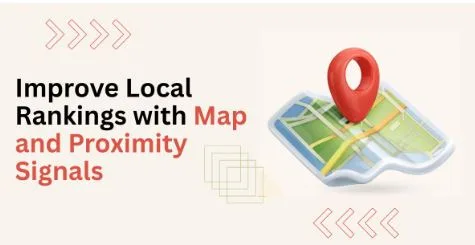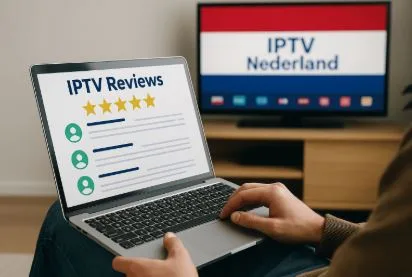Improve Local Rankings with Map and Proximity Signals
Struggling to rank in the right local areas despite optimizing your business listing? Many businesses appear in search results far from their actual service zones, leading to missed customers and wasted visibility. This proximity mismatch not only hurts local reach but also affects trust and conversions. Fortunately, strategies like map citation and proximity optimization can help fix this disconnect. In this article, we’ll show you how to reclaim control over your local presence.
Understanding Map & Proximity Signals in Local SEO
Map signals primarily refer to factors tied to Google Maps listings: driving directions, star locations, check-ins, and engagement with map pins. Proximity signals are determined by the user’s actual device location, GPS data, and increasingly popular “near-me” queries or geotagged mentions.
- Map Signals: Appear in Google Maps, influence which businesses are showcased in local packs.
- Proximity Signals: Dictated by distance between the user and your business as detected by Google’s AI and GPS technology, not just your address—making mobile optimization and location precision crucial.
In 2025, Google’s algorithm heavily personalizes these signals, adapting to real-time location and user intent, making them more influential than ever before.
Core Signals That Influence Local Rankings
| Signal Type | Description | Importance in 2025 |
| NAP Consistency | Ensures Name, Address, and Phone match everywhere | VERY HIGH |
| Map/GBP Presence | Detailed, active Google Business Profile and Maps listing | VERY HIGH |
| Proximity | Distance from searcher/device to business | EXTREMELY HIGH |
| Reviews & Engagement | Volume, frequency, and local relevance of reviews | HIGH |
| Geo-tagged Content | Uploaded images, posts, and media tied to location | HIGH |
| Schema Markup | Use of localBusiness and geo-coordinates in schema | MEDIUM |
Proximity vs. Map vs. Other Local Ranking Signals Comparison
- Proximity now dynamically overrules some relevance factors in hyperlocal queries.
- Map signals (Google Maps activity, driving directions, etc.) offer engagement evidence Google weighs heavily.
- NAP consistency and local citations remain the foundation for credibility and a trustworthy presence.
Actionable Strategies to Optimize for Proximity Signals
- Claim and optimize your Google Business Profile (GBP): Ensure all fields are completed, post regularly, and select accurate categories.
- Use geo-tagged images: Upload photos with EXIF location data—tools like GeoImgr or GMB Briefcase help automate this step.
- Add location-based keywords: Integrate your city, neighborhood, or landmark naturally into descriptions and page headings.
- Encourage local reviews and Q&A activity: Prompt satisfied customers to mention location specifics.
- Embed Google Maps on local landing pages: Increases dwell time and proves location to Google.
- Tools to use: GeoImgr, Google Maps Embed, Local Falcon, BrightLocal, GMB Briefcase for audits.
How to Leverage Map Signals for Better Visibility
- Optimize Map Citations: Keep NAP consistent across all directories and map platforms. Add precise categories and geo-coordinates for each listing.
- Track Direction Requests: Monitor Google direction requests—more requests, more engagement signals.
- Use Local Schema Markup: Embed latitude/longitude in site schema for extra clarity.
- Publish Geo-focused Google Posts: Share updates about local events, promotions, or news tagged to your service area.
- Visual Evidence: Add a screenshot of your Google Business Profile insights showing spikes in direction requests after local campaign updates.
Common Mistakes That Hold Back Your Local Map Rankings
- Inconsistent NAP data (even a typo can hurt results).
- Duplicate or fake listings; avoid PO boxes.
- Failing to encourage (and respond to) reviews.
- No engagement insights – no calls, direction clicks, or visits logged by Google Maps.
- Pro Tip: Regularly audit your directory and GBP listings for accuracy.
How Businesses Across Industries Can Benefit
| Industry | Local Ranking Benefit |
| Plumbers | Show up in urgent “near me” searches – capture emergencies |
| Restaurants | Boost spontaneous walk-ins with map pin optimization |
| Lawyers | Rank higher for legal map packs (local search queries) |
| Salons | Secure last-minute local bookings |
| Agencies | Offer white-label proximity optimization and streamline proposals with a proposal builder tool. |
2025 Trends: Where Map & Proximity Optimization Is Heading
- AI-Powered Predictive Results: Google’s algorithm personalizes maps based on your routine and app usage.
- Voice Search Growth: “Near me” and location-based voice queries are rising rapidly.
- Hyper-local Content: Blog about events, news, or landmarks unique to each area served – list topics your content team can cover for a strategic edge.
- Increased Focus on Engagement: Google measures user interactions more than ever.
Final Checklist: Optimize Your Local Presence
- Fully optimize GBP with all local categories
- Sync NAP/citations across top directories
- Upload geo-tagged photos showing your storefront, staff, and product
- Build citations with correct geo-coordinates
- Engage with every review and Q&A
- Embed Google Maps on landing pages
FAQs
Q1. How does proximity affect ranking for multi-location businesses?
Ans : Each location is ranked individually; proximity is measured from the searcher to the closest verified address.
Q2. Do citations still matter in 2025?
Ans : Yes, both map-based signals and citation consistency remain critical for ranking—even as proximity gets more weight.
Q3. Can I rank without a physical address?
Ans : Service-area businesses can rank, but should use Google’s service area settings and maintain accurate citations.
Q4. How quickly do proximity optimizations show results?
Ans : In dense areas, results may be visible within 2–4 weeks if all signals (GBP, NAP, citations, reviews) are in sync; more competitive markets may take longer.
Want to show up exactly where your customers are searching? CitationBuilderPro.com’s Map Citations & Proximity Optimization Service helps your business appear in the right neighborhoods, at the right time. With accurate map signals, geo-tagged content, and Google-friendly tactics, you won’t just boost local rankings – you’ll bring in real foot traffic, phone calls, and leads without confusing SEO jargon or wasted effort.





